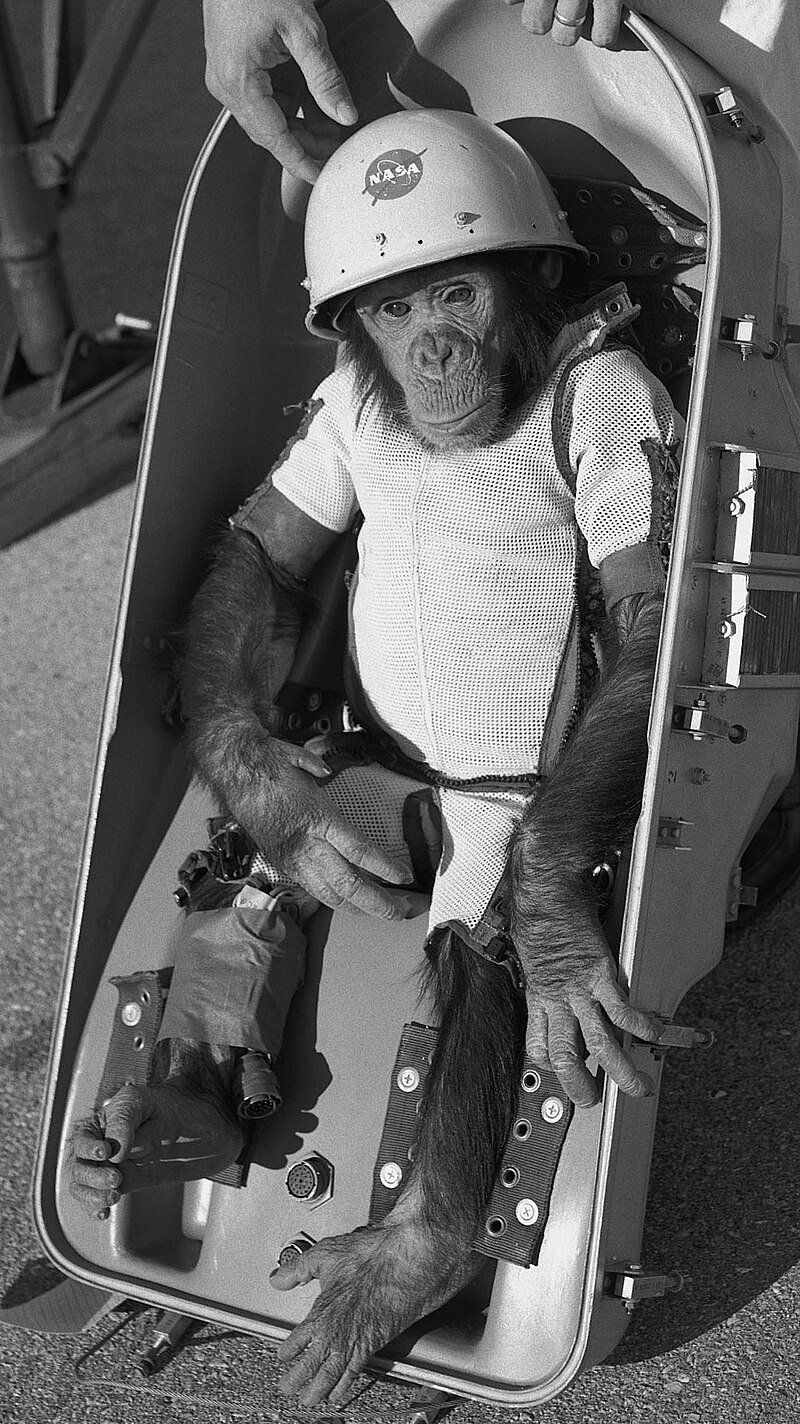In 1961, a remarkable event took place that would forever change the course of space exploration. It was the year when Ham the Chimp became the first hominid to venture into outer space. This historic journey, which took place on the 31st of January 1961, marked a pivotal moment in the space race between the United States and the Soviet Union.
Ham’s space journey was made possible by NASA’s Mercury-Redstone 2 mission. This mission aimed to test the feasibility of sending living organisms into space and to gather valuable data on the effects of space travel on the human body. Ham, a chimpanzee chosen for his intelligence and ability to be trained, was the perfect candidate for this groundbreaking mission.
The significance of Ham’s journey lies in the fact that it demonstrated that tasks could be performed by astronauts in space. During the suborbital flight, Ham successfully completed a series of lever-pulling tasks, showcasing the ability of humans to carry out complex actions in a weightless environment. This was a crucial step towards proving that humans could function effectively in space, paving the way for future manned missions.
Ham’s safe return to Earth was of utmost importance in this mission. It provided valuable insights into the physiological and psychological effects of space travel on living organisms. The data collected from Ham’s journey contributed to the development of safety protocols and measures for future manned missions, ensuring the well-being of astronauts.
The success of Ham’s mission also had a direct impact on the subsequent events in the space race. Just a few months after Ham’s journey, American astronaut Alan Shepard made history by becoming the first American to travel into space. Shepard’s flight aboard the Freedom 7 spacecraft on May 5, 1961, would not have been possible without the valuable knowledge gained from Ham’s mission.
It is important to note that Ham’s journey was not without risks. Space travel, especially in those early days, was fraught with uncertainties and dangers. However, the meticulous planning and preparation by NASA’s team of scientists and engineers ensured that Ham’s mission was as safe as possible.
The legacy of Ham’s journey extends beyond the realm of space exploration. It symbolizes the spirit of exploration and the human desire to push boundaries and reach for the stars. Ham’s bravery and contribution to the advancement of space travel will always be remembered as a significant milestone in our quest to understand the universe.
To learn more about Ham’s journey and the Mercury-Redstone 2 mission, you can refer to the following external references:
1. NASA’s official website: [https://www.nasa.gov/](https://www.nasa.gov/)
2. Smithsonian National Air and Space Museum: [https://airandspace.si.edu/](https://airandspace.si.edu/)
3. Encyclopedia Astronautica: [http://www.astronautix.com/](http://www.astronautix.com/)
In conclusion, the year 1961 witnessed a groundbreaking event in space exploration with Ham the Chimp’s historic journey into outer space. This achievement not only paved the way for future manned missions but also showcased the capabilities of humans to perform complex tasks in a weightless environment. Ham’s contribution to the space race will always be remembered as a significant milestone in our quest to unlock the mysteries of the universe.
SEO Excerpt:
In 1961, Ham the Chimp became the first hominid in outer space, marking a pivotal moment in the space race. Ham’s journey was instrumental in proving that tasks could be performed by astronauts in space. His safe return to Earth was vital in paving the way for manned space missions, leading to Alan Shepard’s historic flight later that year. Learn more about this historic event and its significance in space exploration.

